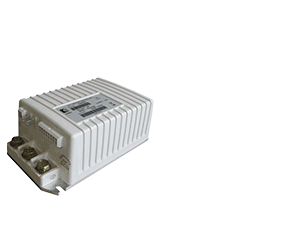With the multitude of deep-cycle, lithium-ion batteries available for golf cars, it can be difficult to compare the qualities and designs that make one better than the other. While features such as zero maintenance, charge indicators, amp-hour ratings, and capacity are easy to find, the internal design and craftsmanship are not so obvious.
Internal construction and cell selection significantly impact battery quality (see Golf Car Advisor Jan/Feb 2024 issue), but another important element is the Battery Management System (BMS). Most deep-cycle lithium-ion batteries have a BMS that in their basic function is a built-in computer that is programmed to monitor, report and control certain aspects of the battery. The three key areas of monitoring are temperatures, cell voltages, and pack current. The BMS takes those inputs and determines whether it should intervene with the operation of the battery.
Teardown testing of several lithium-ion batteries can show the wide variety of designs and hardware quality. The BMS in batteries can range from a sophisticated unit for special applications to very basic off-the-shelf systems designed for multiple uses. While understanding the software that goes into various BMS used in these batteries can be difficult, for the golf car owner some of the most important differences can be seen from the BMS hardware quality.
CELL VOLTAGE AND BALANCING
Cell voltage must always be monitored accurately to preserve safety and life of the cells. Each cell is not identical and during operation the cells naturally drift apart in voltage, requiring a correction to keep the cells “balanced”. This correction is usually done by discharging higher cells at the end of charge. A good BMS should have high quality voltage sensing leads with robust connections and wiring. Settling for lower cost hardware could give false readings of cell voltage, leading to premature failures.
HEAT MANAGEMENT
Controlling heat is critical when charging and discharging lithium-ion batteries. While heat from cells and electronics is an expected aspect of battery operation, managing the heat is key to battery life due to the impact on cell and hardware stability. It’s important to ask your battery dealer what heat sinks are used on the BMS when comparing batteries. Some battery manufacturers use minimal or no heat sinks while others use thick aluminum sinks. The BMS should have sensors to monitor the temperature of cells and electronics. Multiple sensors are better than one, making it another indication of quality when comparing batteries.
BATTERY STATUS
One key feature to look for is the ability to quickly determine battery status. A sophisticated BMS will have button and/or LED light functions indicating its condition or state of charge. If available, this feature allows the golf car owner to quickly and easily see the condition of the battery(s) from the top of the battery case. These systems can also allow you to turn the battery on or off to save power and indicate if there are any problems with the battery. Some systems can be linked wirelessly to a mobile phone app to provide the same information and more.
RESEARCH
As you begin to understand how lithium-ion batteries work in your golf car, you’ll find from your research that construction and design will allow you to identify those with higher quality. For more information on lithium battery cell types and construction, visit www.usbattery.com.




















